The following is a chapter in “A Comprehensive Theory of EarthBound,” a series that aims to better understand the storytelling of Shigesato Itoi’s landmark video game. Find the full series here.
Why do we play video games? It’s a question with as many answers as there are gamers, but broadly speaking it usually comes down to this: because they place us at the center of stories in which we are the heroes, in which our destiny is inexorably bound up with the fate of entire worlds.
Why, then, is one of the most significant cult titles in video gaming history one which seems to care so little about the player and their quest?

EarthBound is a game that redefines nothing.
With this play on words, our Comprehensive Theory of EarthBound begins. Within this broad-ranging analytical series, we will see that EarthBound was a game that redefined the self-contained metaphysics—and by extension the moral scope and player ontology—of the narrative-driven video game Both when it is whimsical, and when it tends more towards the horrifying, EarthBound entreats us to consider the idea that there might be something “beyond” our impressions of our own heroic significance.
It is a game both enormously disquieting and enormously affirming. The most disquieting thing about EarthBound is its embrace of a universe morally and metaphysically beyond the heroic quest, its recognition of the void of necessary meaning that surrounds both the hero and the player themselves. The most affirming thing about the game is that it suggests the worthiness of defiance, and the potency of the driven, hopeful individual even in such a pitiless environment. The mastery of the game resides in the way the game’s technical and narrative design are aligned to this central precept.
Still, it is not enough to pun with accomplishment about how EarthBound redefines ‘nothing’; the thing about ‘nothing’ is that it is hard to convincingly describe. The goal of this first article in our theory of EarthBound, then, is to attempt to describe what, in terms of EarthBound, ‘nothing’ really is.

We will begin with a survey of the state of play in the role-playing-game idiom before EarthBound came along, to acquire a sense of the rules as they were before this game broke so many of them. We will consider video gaming’s rote treatment of the heroic role, and the way in which the heroic role dictated the procedures of the ‘moral universe’ of gaming, in terms of meaning, significance and order. We will thereafter take ginger, careful steps into EarthBound’s early fundamentals; the early developments of its plot, and what most superficially distinguishes it as an aesthetic work, before we get to squiring with the game’s most evident and abiding reality, one that will to some extent characterise not only this piece but also those that follow in its lineage: that Ness, and the player, are alone in this game’s unforgiving universe.
The Realm of the 90s RPG
For those who don’t know—and if indeed you’ve never encountered EarthBound until now, you hold an enviable status—just imagine the landscape of 1990s RPG as if it were a humdrum, medium-sized town: well-populated, but hardly teeming with life, difference, distinction, or struggle. Imagine, then, that into this sleepy burg of Dragon Quests, Final Fantasy XIs and The 7th Sagas crash-lands some bizarre, extra-terrestrial aberration, shaped oddly like a video game cartridge box. You can almost see your face reflected in the layer of polythene wrap around the box, as your stare meets with the cover’s android face, a face that returns your stare with a certain impudent challenge. Your face merges with the one you’re looking upon. You have met the alien, and it is you.
Welcome to EarthBound.
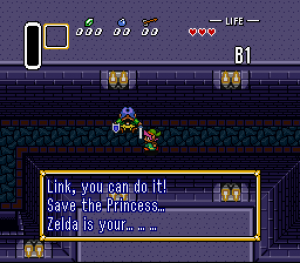 To understand this game of bottle rockets and bats, of affectless combinations of Western and Eastern cultural tropes, it is necessary that, in addition to a little basic explanation, we understand its context. The template for RPGs as they existed prior to EarthBound called for a mythos that did not spill over the edges and that did not permit loose ends; the moral scope of these stories, full of knights and helpless princesses and comely townsfolk as they were, revived the dichotomous “good vs. evil” moral scope of the romance novel. You, the player, won with your purchase the opportunity to take up the hero’s mantle. The avatar of your heroism in the game’s world was often silent (from A Link to the Past to Chrono Trigger and well beyond), and it was also a symbol of a tacit obligation that you had undertaken: that you would act as the bearer of the hero’s lily-white moral standard. Against you stood an evil, an unstinting and totemic entity; it lived only to stand in anticipation of its inevitable defeat by your hand, as true of Secret of Mana’s Thanatos as of Darklands’ Baphomet. Everything and everyone you encountered within a given game’s limits tended towards a clear function relative to the heroic quest: either to facilitate your positive kleptomania by letting you raid their cupboards for pot-lid shields, to sell you items, or to join you on your journey; or else to be entirely of the villainous mold, enemies like goblins, ghouls, or bosses bent pathologically on extinguishing your chosen light from the universe.
To understand this game of bottle rockets and bats, of affectless combinations of Western and Eastern cultural tropes, it is necessary that, in addition to a little basic explanation, we understand its context. The template for RPGs as they existed prior to EarthBound called for a mythos that did not spill over the edges and that did not permit loose ends; the moral scope of these stories, full of knights and helpless princesses and comely townsfolk as they were, revived the dichotomous “good vs. evil” moral scope of the romance novel. You, the player, won with your purchase the opportunity to take up the hero’s mantle. The avatar of your heroism in the game’s world was often silent (from A Link to the Past to Chrono Trigger and well beyond), and it was also a symbol of a tacit obligation that you had undertaken: that you would act as the bearer of the hero’s lily-white moral standard. Against you stood an evil, an unstinting and totemic entity; it lived only to stand in anticipation of its inevitable defeat by your hand, as true of Secret of Mana’s Thanatos as of Darklands’ Baphomet. Everything and everyone you encountered within a given game’s limits tended towards a clear function relative to the heroic quest: either to facilitate your positive kleptomania by letting you raid their cupboards for pot-lid shields, to sell you items, or to join you on your journey; or else to be entirely of the villainous mold, enemies like goblins, ghouls, or bosses bent pathologically on extinguishing your chosen light from the universe.
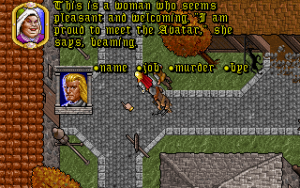 The RPG genre showed few signs of change as EarthBound’s release drew closer. The worlds of games like Dragon Quest V, with its classical sense of how narrative drama can provoke undulations in heroic fortune, or Final Fantasy VI, which boasted more cinematic accouterments than any RPG before, were measurably richer. Yet, in terms of the moral principles that guided their stories, these worlds were still full and still seemed to exist solely for the gamer and the gamer’s vessel, the ‘hero’. These games encouraged the perception that their worlds’ dimensions were mere extensions of the player’s needs and mission, solely there to service their escapist drive. As far as these games had it, without you, the world of the game—whether it’s the world of Willow or A Link to the Past,—will end: both within the context of the fiction, as an evil that only you can defeat runs amok, and in a real-world context, given that the game’s only reason and method for being is that someone should play it.
The RPG genre showed few signs of change as EarthBound’s release drew closer. The worlds of games like Dragon Quest V, with its classical sense of how narrative drama can provoke undulations in heroic fortune, or Final Fantasy VI, which boasted more cinematic accouterments than any RPG before, were measurably richer. Yet, in terms of the moral principles that guided their stories, these worlds were still full and still seemed to exist solely for the gamer and the gamer’s vessel, the ‘hero’. These games encouraged the perception that their worlds’ dimensions were mere extensions of the player’s needs and mission, solely there to service their escapist drive. As far as these games had it, without you, the world of the game—whether it’s the world of Willow or A Link to the Past,—will end: both within the context of the fiction, as an evil that only you can defeat runs amok, and in a real-world context, given that the game’s only reason and method for being is that someone should play it.
The nature of video-game storytelling as it evolved through the early days of the home-console era prized the notion of heroic significance. This keyed in with historical precedent. In centuries past—which contended with heroism as an active, often militaristic pursuit as opposed to something from fictive domains—the hero’s station was taken as an affirmative symbol of universal meaning: the hero should give the world meaning through moral action; they must be a living argument in favor of (often religious) universalism while they do so, someone who vouches for moral laws, and who therefore preserves the people aligned with them from a Godless “soup of nothingness,” what might be known in a more secular sense as ‘the void’.
Humanity’s natural tendency to recoil from the void—from negative elements that nullify moral value as opposed to those that are merely morally wrong—cannot be understated, and percolates beyond the convictions of religion or conquest. Casanova, one particularly amoral model of fatalistic ‘hero’, insisted that “the existence of nothingness is absurd.” Elsewhere in secular thought, the likes of Parmenides insisted that everything that exists remains in some sense, and so ‘nothingness’, along with ‘change’, surely cannot be seen to be real. In terms of ‘nothingness’ itself, it seems that the medievalistic RPG took on its period’s philosophy as well as its fashion sense, in its belief that “Nature abhors a vacuum”: that any vacant space will inevitably be filled by some idle décor, or a platitudinous NPC, or a side quest that, again, reinforces the immutable herocentrism of the playable universe.
Along Came EarthBound…
EarthBound may replace the grotesque but noble monsters of RPG tradition with piles of vomit and latchkey punk kids; it may replace swords with frying pans; and it may forego a blood-and-sandal setting for a simulacrum of small-town America; but these aesthetic changes are not what most distinguishes this game from its predecessors and its descendants. The thing in this game that wells up “a deep, sickening, sinking lump of dread” in the gamer is not the broader outlines of its story, which in its “Chosen One vs. Evil” design seemed positively cutesy even in 1994. Rather, it is that this game embraces a universe that is morally and metaphysically beyond the player’s heroic quest.
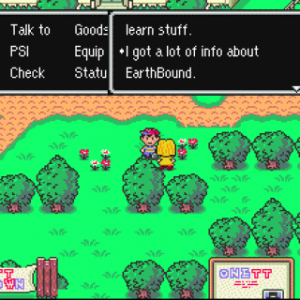 It doesn’t seem at its outset that EarthBound will be essaying anything quite so profound; indeed, it seems at a glance that this will be a game that eschews pursuit of such big questions. The story opens on what appears to be just any other American kid. Ness is rarely seen far from a baseball bat, and he’s sometimes teased for being a little overweight. His mother is indulgent but mildly neglectful, or at least ineffectual against her gifted son’s drive. His father is an absent debtor. This kid’s next-door neighbors, those to whom his father is hundreds of thousands in debt, are be’mansioned, beetle-browed basketcases who whimsically abuse their children in what at first seems like something that might be purposed for particularly crass comic relief. All it takes is the crashing of a meteor, and the arrival and tragic death of a prophecy-bearing bee, before Ness is all but strong-armed by fate into the wilds of Eagleland to save the universe from an ontologically ambiguous womb of evil called Giygas.
It doesn’t seem at its outset that EarthBound will be essaying anything quite so profound; indeed, it seems at a glance that this will be a game that eschews pursuit of such big questions. The story opens on what appears to be just any other American kid. Ness is rarely seen far from a baseball bat, and he’s sometimes teased for being a little overweight. His mother is indulgent but mildly neglectful, or at least ineffectual against her gifted son’s drive. His father is an absent debtor. This kid’s next-door neighbors, those to whom his father is hundreds of thousands in debt, are be’mansioned, beetle-browed basketcases who whimsically abuse their children in what at first seems like something that might be purposed for particularly crass comic relief. All it takes is the crashing of a meteor, and the arrival and tragic death of a prophecy-bearing bee, before Ness is all but strong-armed by fate into the wilds of Eagleland to save the universe from an ontologically ambiguous womb of evil called Giygas.
He is, at the point at which he receives his mission and departs with the assurances of his helpless parents, alone.
For all that EarthBound brims over with American cultural cues, the article of Americana to which it bears closest thematic resemblance is Bob Dylan’s masterpiece, The Basement Tapes. Both exalt in the absurd and the unlikely; both invert the tropes from which they were born; both languished in relative obscurity following release; both linger on the void. Even the finest JRPGs that form constellations around EarthBound’s Starman’ed star have a promise of heroic justice written inerasably into their stories, their enemy AI, and their curves of difficulty. In terms of what it holds for its player, in terms of what its universe holds for its Chosen One, EarthBound operates by a similar maxim to the one Dylan espouses on that album’s final side in “Nothing Was Delivered”:
Nothing is better, nothing is best/Take care of yourself
Take care of yourself; when you’re alone, you’re the only one who can.
Ness, the Boy Alone
Thus, Ness starts out alone. His independence is not in itself remarkable, being the precondition of many a child-centric narrative; no, the remarkable thing about the independence of EarthBound’s protagonist is the weight ascribed to it by the details of the game’s narrative.
Another, far more broadly known example of a quest involving a young child alone in the world is Pokémon; in it, the in-game hero is granted a provisional invincibility before the game proper has even begun, immediately being bequeathed with a protector whose capabilities tower above the norm. At any rate, the protagonist never encounters anyone who wishes to do them deep harm; the player need only navigate stretches of mild, and heavily conditioned, peril before being re-acquainted with an urban oasis, in which stocking up on necessary provisions is no fiduciary strain. In fact, in a certain light Pokémon looks like EarthBound on anti-depressants, using an additional proxy layer (from the player to the avatar to the Pokémon, the avatar’s avatars) to further mitigate its player’s sense of combat risk, while formalizing itself with replete ordering structures, from its logical type-based battle dynamics to the fact that its main adversaries are licensed, instructive Gym leaders and crime syndicates that are more comic than truly evil.
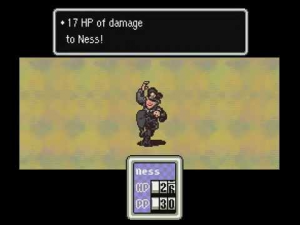 There is no comparable sense of security or order within EarthBound. Nothing commutes. From Ness’ very first steps, EarthBound’s combat difficulty spikes so repeatedly that there seems to have been no kind of metaphorical balancing-of-the-books between this kid who fights with a baseball bat and his often adult enemies who fight with knives. In gaming, towns are typically springs of civility, areas in which no compromise of the peace is possible (or at least likely); yet as soon as Ness makes the symbolically rich descent from the hill on which he was raised, into the bustling center of his hometown, he is beset, eagerly and often, by all manner of foes. And it’s true, these are not monsters out of the Eldritch handbook, but rather characters that invite a humanist gaze: street punks for whom the arcade is home and temple, gang ringleaders, policemen, all characters that attack with lethal force, all of them chock-full of subtextual cues (to be discussed in time). Other than what they offer in EXP, there is no reason for Ness to fight, bar his need to resist others’ attempts to hurt him.
There is no comparable sense of security or order within EarthBound. Nothing commutes. From Ness’ very first steps, EarthBound’s combat difficulty spikes so repeatedly that there seems to have been no kind of metaphorical balancing-of-the-books between this kid who fights with a baseball bat and his often adult enemies who fight with knives. In gaming, towns are typically springs of civility, areas in which no compromise of the peace is possible (or at least likely); yet as soon as Ness makes the symbolically rich descent from the hill on which he was raised, into the bustling center of his hometown, he is beset, eagerly and often, by all manner of foes. And it’s true, these are not monsters out of the Eldritch handbook, but rather characters that invite a humanist gaze: street punks for whom the arcade is home and temple, gang ringleaders, policemen, all characters that attack with lethal force, all of them chock-full of subtextual cues (to be discussed in time). Other than what they offer in EXP, there is no reason for Ness to fight, bar his need to resist others’ attempts to hurt him.
Ness’ independence is so bracing, perhaps even dispiriting a sample of EarthBound’s acknowledgment of the void because his independence is presented through a loneliness that makes him horribly, realistically vulnerable, just as a child out alone in the world would be. It is evident from the start that Ness inhabits a world that is not fundamentally attuned to his mission, nor one sympathetic to his struggle. Out he goes, not into a justly predetermined world built to showcase his heroism, but into a realm we can more keenly recognize from our own, real lives. Around him, there is merely a yawning chasm of incident, often violent incident, one that obeys no discernable elemental logic. Ness, for no particular reason bar his mildly incongruous presence, becomes the target of its arbitrary wrath.
The Peaceful Rest Valley
EarthBound’s localization was a vast undertaking; the scale of this library gives a sense of how rigorous a process this was, as various allusions —to God, to violence, to Coca-Cola, prejudice and the Blues Brothers—were excised from the game’s original incarnation as Mother 2. One translational quirk that does right for the Western gamer’s experience of EarthBound is the fact that, in order to avoid a suit from Jerry Garcia, a region originally known as “Grateful Dead Valley” had to be renamed.
Sitting as it does between Twoson and Happy-Happy Village, the “Peaceful Rest Valley” is the first stage of EarthBound that truly realizes Itoi’s vision of a game that makes its player ‘distraught’. The fact that the area’s combat trials are abominably hard, and that Ness still faces his enemies alone, is but the tip of the sentimental iceberg. The game has subjected us by this stage to its vision of orderlessness; in the Peaceful Rest Valley, this orderlessness becomes something of a cruel joke. The transactional society and the threat of violence that blend anarchically in the urban regions thus far visited turn into near-total isolation, and gameplay challenges begin to grow markedly more absurd.
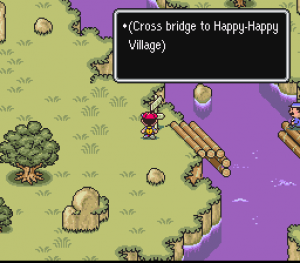 Our reason for being here? Because we must rescue someone—a stranger and a fellow pre-teen—who has been kidnapped and taken to “Happy Happy Village,” which nestles at the valley’s end; one character adds indolently as he tells us this that she may have been taken there for the purpose of a “human sacrifice or something.”
Our reason for being here? Because we must rescue someone—a stranger and a fellow pre-teen—who has been kidnapped and taken to “Happy Happy Village,” which nestles at the valley’s end; one character adds indolently as he tells us this that she may have been taken there for the purpose of a “human sacrifice or something.”
The nature of the village is too haunting and replete with its own remarks on the nature of cultish fanaticism to essay in full here; but both it and the Peaceful Rest Valley in which it reposes epitomize the irony and ontological uncertainty that run through EarthBound. That ‘ironic’ tone, manifested throughout the aesthetics of these areas, desecrates Ness’ heroic intention; the increased level of challenge in this stretch of the game taunts Ness and taunts us. We have no companion and little direction. Behind us—the adult world, civility, parentage, law enforcement—there was little to suggest hope. Around us, there is even less than that: no sense of normativity with which to steel ourselves for the tribulations of the hero. The essence of the Peaceful Rest Valley is not to spar with the hero and send them, enriched in experience and a sense of the correctness of their own moral predisposition, on their way, but rather to actively try to stop them. From this comes Itoi’s vision of the distraught gamer: without an ally, fighting not only enemies like Lil’ UFOs and deadly plants, but also the guilty urge to give up and submit to the game’s difficulty.
The valley’s awful, sickly pallor, and the despairing atonal legato of its accompanying theme, conspire with swift design to leave the player feeling a foreign sensation. There is no consonant harmony in the Valley’s musical theme, and there is no sense of harmony between the gamer and the game’s positioning of its protagonist either. It feels almost as if there were no narrative preordainment in this game at all, no sense of the game’s metaphysics being attuned to the ‘noble’ deontological goal. Of course, this sense of complete orderlessness is but a skillfully rendered illusion, part of the game’s technical-narrative performance. But EarthBound’s narrative treatment of Ness’ literal and moral aloneness is indulgent, and it uses this state to upend every player’s preconceptions of gaming morality. In the valley, the feeling that this is a game that is against its player, blessed with a narrative that runs against its hero, becomes awfully immanent.
A Tale of Two Sesame Seeds
We ourselves could be accused thus far of exalting in the darkness of this pastel-colored, wise-cracking piece of work; we will see in the course of our theoretical development that the ‘dread’ of EarthBound is a conspiracy of both its comic and its ‘tragic’ elements, that it is a machine of dialectic and a highly effective one. It feels almost as if EarthBound’s pursuit of the void would be impossible to take seriously if not for the game’s comic component, a thematically important “light side”—that’s to say, a comic element that is not purely used for relief.
And it’s true, there is something that speaks of EarthBound’s conception of significance and nothingness: a funny and procedurally daring little sub-sub-sub-chapter in the Dusty Dunes Desert.
 In this moment of the game, at last, EarthBound seems to have arrived at an agreeable plateau: the extended tribulation of Haunted Threed has been bested; Jeff’s invaluable mechanical skills have been added to consolidate the roster; Paula is between kidnappings; and we’re back on the road with the Runaway Five. A traffic jam on the desert highway between Threed and Fourside truncates our progress again; but so bruised has the player been left by one unexpected twist after another that we are inclined to just enjoy the buoyant and uncharacteristically consonant Dusty Dunes Theme, and the comforting, banal familiarity of a traffic jam. We merely nod happily enough with recognition and head off to the explore the desert in the meantime, taking care not to pull up with sunstroke.
In this moment of the game, at last, EarthBound seems to have arrived at an agreeable plateau: the extended tribulation of Haunted Threed has been bested; Jeff’s invaluable mechanical skills have been added to consolidate the roster; Paula is between kidnappings; and we’re back on the road with the Runaway Five. A traffic jam on the desert highway between Threed and Fourside truncates our progress again; but so bruised has the player been left by one unexpected twist after another that we are inclined to just enjoy the buoyant and uncharacteristically consonant Dusty Dunes Theme, and the comforting, banal familiarity of a traffic jam. We merely nod happily enough with recognition and head off to the explore the desert in the meantime, taking care not to pull up with sunstroke.
The Dusty Dunes desert is one of the fairly frequent wide-open, mostly unpopulated spaces interpolated into EarthBound’s world design, an area in which the screen can be at any point dominated only by a couple of palette tones, with no other intimations of direction or boundary. Just as we start to feel a sense of unease at the sense of blank and unpromising scale around them, we come across a little black sesame seed. Well, we might come across him: he’s one pixel in height, one in width, buried in the desert sands.
 The seed expresses his loneliness and his desire to be united with the white sesame seed, a counterpart located elsewhere in the desert; should you find this cousin seed, all the more difficult considering he’s as white as the sand itself, the black seed begs you pass on his story to the white, so that they might be united in abstracted community. Their insignificance of scale does not mute the magnificence of their refusal to accept a Calvinistic perception of their predetermined status as mere immobile sesame seeds, too little to be heir to the creation of meaning. No, if EarthBound sparked a slow and still-aborning ‘Reformation’ in gaming, the seeds are its model Lutherans, unwilling to meekly accept the seeming void in which they have been placed. They exemplify the universe of EarthBound’s metaphysical ‘tough love’: there is no difficulty or obstacle spared these seeds (not least that they should not be able to speak or self-actualize), and yet they have room in the nothingness they must inhabit. Thus they have the means to find meaning of their own.
The seed expresses his loneliness and his desire to be united with the white sesame seed, a counterpart located elsewhere in the desert; should you find this cousin seed, all the more difficult considering he’s as white as the sand itself, the black seed begs you pass on his story to the white, so that they might be united in abstracted community. Their insignificance of scale does not mute the magnificence of their refusal to accept a Calvinistic perception of their predetermined status as mere immobile sesame seeds, too little to be heir to the creation of meaning. No, if EarthBound sparked a slow and still-aborning ‘Reformation’ in gaming, the seeds are its model Lutherans, unwilling to meekly accept the seeming void in which they have been placed. They exemplify the universe of EarthBound’s metaphysical ‘tough love’: there is no difficulty or obstacle spared these seeds (not least that they should not be able to speak or self-actualize), and yet they have room in the nothingness they must inhabit. Thus they have the means to find meaning of their own.
The Secret of EarthBound
The secret of EarthBound’s universe lies somewhere in the contrast between the tale of the sesame seeds and the brutality of the early stages of Ness’ quest. One prong of EarthBound’s narrative method seems to insist on a blank universal indifference, of the ever-presence of an attendant ‘nothingness’, of the lack of a relativizing ‘something’ that provides us with a sense of moral dichotomy. The other seems to reason in accordance with Parmenides: that that which has once borne meaning, that which can ever bear meaning, resists the dominion of the void, and fills the world defiantly with meaning. At which point we understand that it is not the other side, the ‘bad guys’, that will be our subject in our study, but rather Ness’ world itself, in all its multifarious citizenry. Ness is like the knights of old in being pitted against a vaguely defined ‘evil’; he is sadly unlike them in having to live out his fate in a world with many plans of its own.
But what’s bad for him is good for us. Welcome to (A Comprehensive Theory of) EarthBound. No crying until the end.
Continue Reading
- A Comprehensive Theory of EarthBound series navigation: | “The Horror of Setting in EarthBound” >


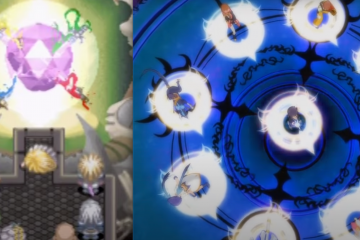

2 Comments
Daf · May 20, 2022 at 11:29 am
I definitely don’t think it’s a coincidence that by the end of the game you’re saved by the hopes and prayers of everyone you’ve helped throughout the story and that the villain appears to have become one with the void in an empty existence of endless suffering. If there’s a set moral to ‘Earthbound,’ it’s something along the lines of meaningful existence being a thing you create by giving a damn about others.
Daf · May 20, 2022 at 12:04 pm
I’m also reminded of a post on the gamefaqs.com message board for Earthbound in which a user, who was in the midst of the early parts of the game, seemed to take the NPC’s indifference to Ness as the game’s attempt at an “open-world thing” and wondered aloud “when does this game get good?” While I think the user might have mistook the storyline setup as Giygas merely being a future threat you’re trying to prevent rather than a clear and present one already, it struck me how unmotivated he was in his quest simply because none of the NPCs showed the player any of the typical RPG deference to the big heroic journey.